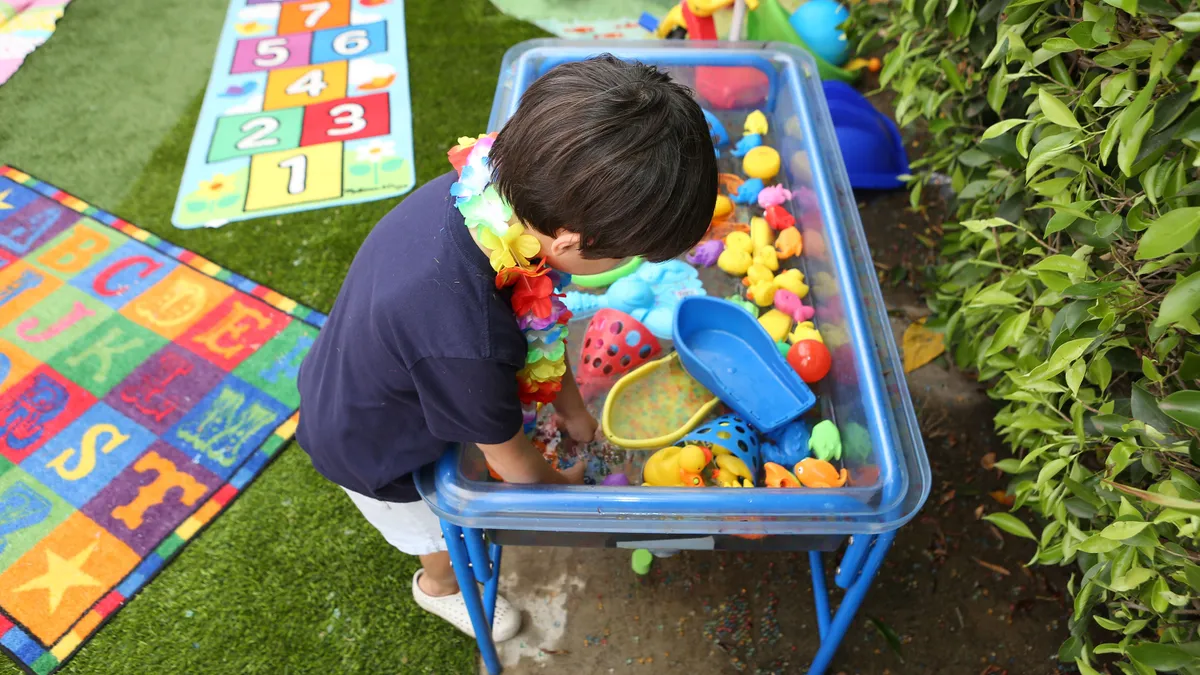Dive Brief:
- Early childhood educators and policymakers should take a broad, holistic and equity-focused approach when measuring the quality of programs for infants, toddlers, preschoolers and early elementary school students, according to a new guide from Trust for Learning, a philanthropic partnership that provides resources to promote ideal learning programs.
- Although several tools for measuring quality in programs for young children already exist, the Trust for Learning guide promotes a unifying strategy for local and state officials when making decisions about what is measured, how it is measured and how the information is used, said Chrisanne Gayl, chief strategy and policy officer with Trust for Learning.
- Quality assessments for early childhood education programs that consider all areas of a young child's social, emotional, physical and academic development can better inform financial and operational decisions, as well as help address inequities, the guide said.
Dive Insight:
Although there's wide consensus on the importance of high-quality early learning experiences, agreement is less certain on what defines program quality and how it's measured, the guide said.
Specifically, what is missing is a measurement framework that takes into account multiple dimensions or levels of quality. The guide recommends measuring quality based on children’s experiences and program characteristics, as well as on the community context such as access to transportation, the levels of trauma impacting local families, and the underlying system of supports, Gayl said.
Program officials and policymakers, for example, should consider professional development opportunities and family engagement practices when measuring quality, the guide recommends.
The guide advocates putting equity in the forefront of how quality is measured in every aspect of programming, not just in the children's classroom experiences that are observed.
Even as classroom experiences are a top priority, decisions around other practices such as hiring, student and family access, budgeting, policy and more all influence equitable approaches, the guide said.
"The choices that we make around measurement lead to what we end up seeing implemented in the classroom," Gayl said.
The guide specifically addresses measuring quality using the Trust for Learning's Principles of Ideal Learning framework that lays out elements of early learning programs to support children's development.
The principles and guide were developed by a nine-person panel of early childhood experts from various organizations and universities, including the National Institute for Early Education Research at Rutgers University in New Jersey, the Institute for Early Childhood Well-Being at Boston University in Massachusetts, and the Tribal Early Childhood Research Center at Michigan State University.
Additionally, panelists included representatives from Teachstone, a company that helps educators improve the quality of educational experiences for students at all age levels; Child Trends, a nonprofit that works with clients to improve services for children, including through monitoring for program quality; and Accelero and Shine Early Learning, a company that works with Head Start and other early learning programs to provide high-quality, outcomes-focused services.
The guide isn't intended to replace other early programming frameworks and monitoring tools such as accreditation by the National Association for the Education of Young Children or states' Quality Rating and Improvement Systems. Rather, it is meant to complement those approaches, with the guide outlining how existing measurements may align.
"They provide a common language for people to really think about quality and think about it deeply in a way that is about the child's experience," Gayl said.
Gayl also recommends program directors, policymakers and other decision-makers determine whether the measurement tool they use aligns with their goals — whether for diagnostic, accountability or funding review needs. Using all the measurement tools available in the field would be a burden for program staff, Gayl said. But with whatever measurement tool is chosen, leaders should conduct equity-focused evaluations, she said.
"What we are trying to do is just get people to think a little bit more broadly about all aspects of what's important," she said












